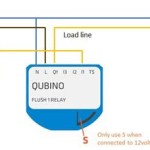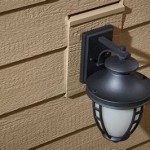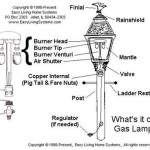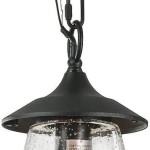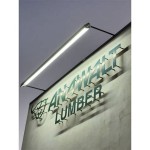Outdoor Light Transformer Not Working: Troubleshooting and Repair
Outdoor lighting systems, particularly those utilizing low-voltage lighting, rely heavily on transformers to convert household voltage to a safe and efficient level for the lights. When an outdoor light transformer malfunctions, it can leave your outdoor spaces shrouded in darkness, disrupting both aesthetics and security. This article will guide you through the common causes of a malfunctioning outdoor light transformer, providing practical troubleshooting tips and potential solutions for repair or replacement.
1. Power Supply Issues
The first step in diagnosing a malfunctioning transformer is to check the power supply. A lack of power to the transformer is a common reason why it won't work. Here's how to investigate:
- Check the Circuit Breaker: Ensure the circuit breaker controlling the transformer's power supply is switched on. It may have tripped due to an overload or other issue. Reset the breaker if it's off.
- Inspect the Wiring: Look for any loose connections or damaged wires in the wiring between the transformer and the power source. Repair or replace any faulty wiring.
- Test the Outlet: If the transformer is connected to a standard outlet, test the outlet with a multimeter or another device to confirm that it's providing power.
If the power supply to the transformer is confirmed, move on to other potential causes.
2. Transformer Overheating
Outdoor light transformers can overheat due to various factors, including:
- Overloading: Connecting too many lights to the transformer beyond its capacity can cause it to overheat and malfunction.
- Poor Ventilation: Insufficient ventilation around the transformer can trap heat, leading to overheating. Ensure the transformer is installed in a well-ventilated area.
- Environmental Factors: Extreme weather conditions, such as prolonged exposure to direct sunlight or high humidity, can contribute to overheating.
If the transformer is overheating, it's crucial to disconnect it and allow it to cool down before attempting any repairs. Consider upgrading to a transformer with a higher wattage capacity if overloading is a concern.
3. Internal Transformer Failure
The most serious cause of a malfunctioning transformer is an internal failure. This can occur due to aging components, wear and tear, or damage from electrical surges.
Signs of internal transformer failure include:
- Buzzing or Humming: A transformer that is failing may emit a buzzing or humming sound.
- Burning Smell: A burning smell emanating from the transformer is a strong indication of a serious issue and should be addressed immediately.
- Visible Damage: Look for signs of damage to the transformer's casing, such as cracks or scorches.
If you suspect an internal failure, it's best to replace the transformer completely. Attempting to repair a faulty transformer can be dangerous and may lead to further damage.
4. Faulty Wiring and Connections
Issues with the wiring or connections between the transformer, lights, and power source can also cause the transformer to malfunction.
- Loose Connections: Check all connections for any looseness or corrosion. Tighten any loose connections and clean any corrosion with a wire brush.
- Short Circuits: A short circuit in the wiring can cause the transformer to overload and fail. Carefully inspect the wiring for any exposed wires or damaged insulation.
- Incorrect Wiring: Improper wiring can result in incorrect voltage levels, causing the transformer to malfunction. Ensure that the wiring connections are compatible with the transformer and lights.
Addressing any wiring issues promptly can prevent further damage to the transformer and ensure the proper functioning of your outdoor lights.
5. Transformer Protection Device
Some transformers are equipped with a protection device, typically a circuit breaker or fuse, to protect against overloads or short circuits.
- Check the Protection Device: If the transformer has a protection device, check if it has tripped. If the device is tripped, reset it following the manufacturer's instructions.
- Replace the Protection Device: If the protection device continues to trip or is damaged, replace it with a compatible device.
A tripped protection device indicates a potential problem with the wiring or the electrical load, which may require further investigation to prevent recurring issues.
By following these troubleshooting steps, you can diagnose and address the root cause of a malfunctioning outdoor light transformer. If you are unsure about any aspect of the troubleshooting process or if the problem persists, it's recommended to consult with a qualified electrician for professional assistance.

Landscape Lights Not Working Solutions To 7 Common Problems

Outdoor Landscape Light Troubleshooting Guide Abulous Lighting

Troubleshooting Low Voltage Landscape Transformer Led Systems Lighting Pro

Troubleshooting Low Voltage Landscape Transformer Led Systems Lighting Pro

Landscape Lighting Replace A Transformer

Troubleshooting Landscape Lighting That S Not Working

Low Voltage Outdoor Landscape Lighting Transformer What To Do When All Your Lights Stop Working

Troubleshoot Ldf Outdoor Lighting

Austin Landscape Lighting Why Are My Lights Dim Nightscenes

Troubleshooting Tips For When Landscape Lights Stop Working Lighting Pro
Related Posts

